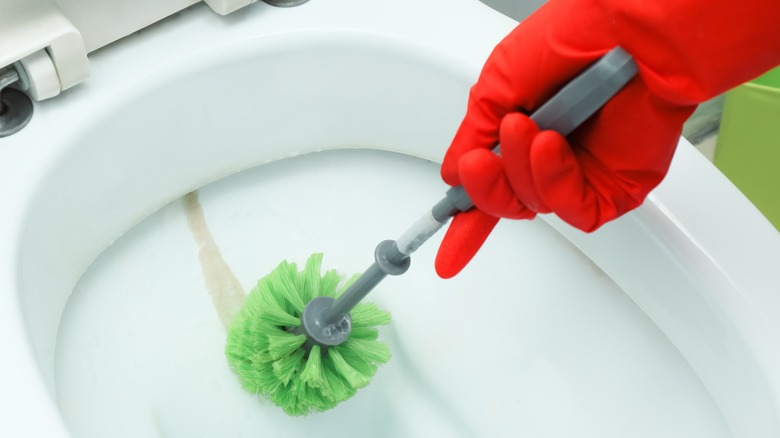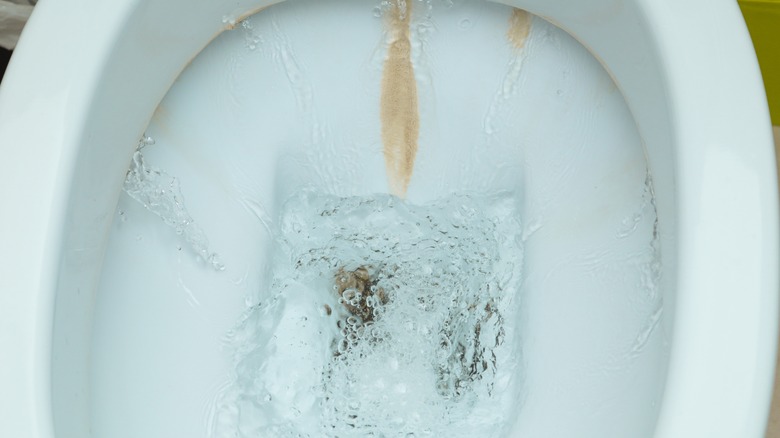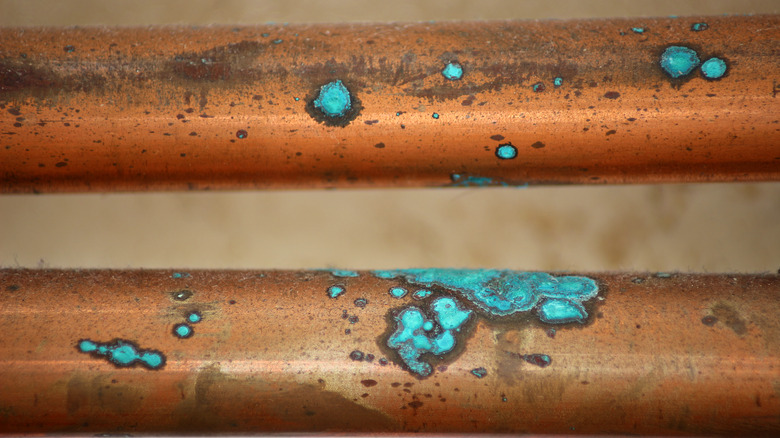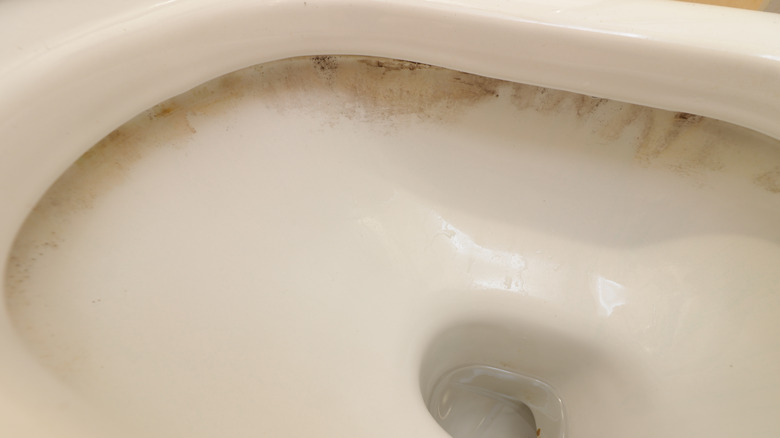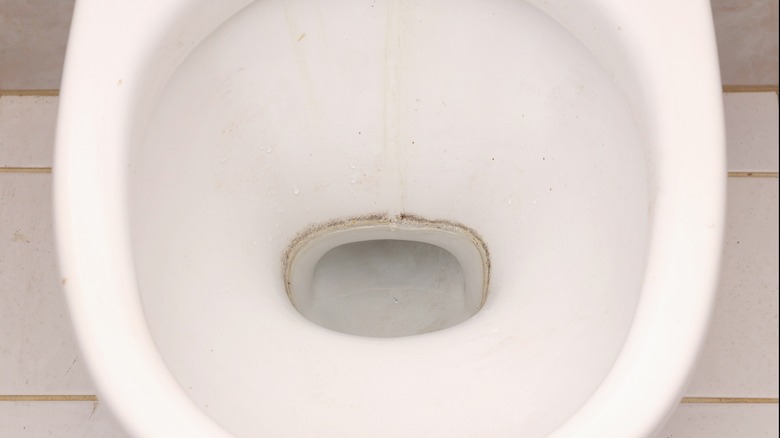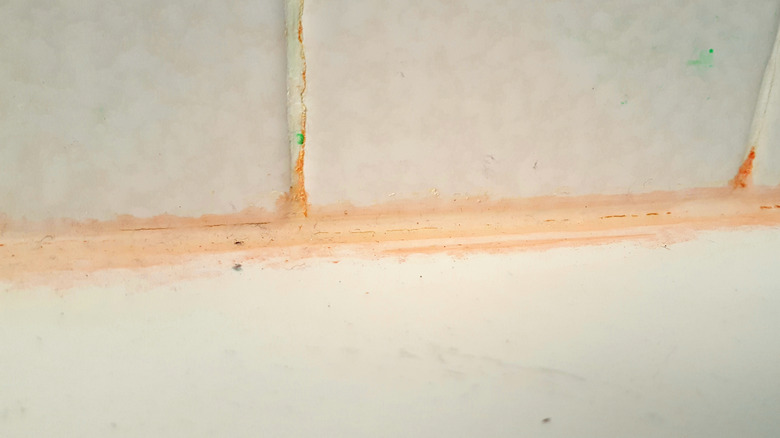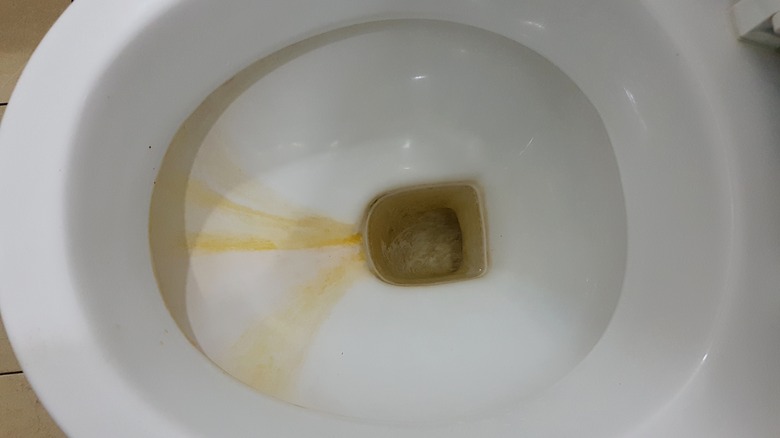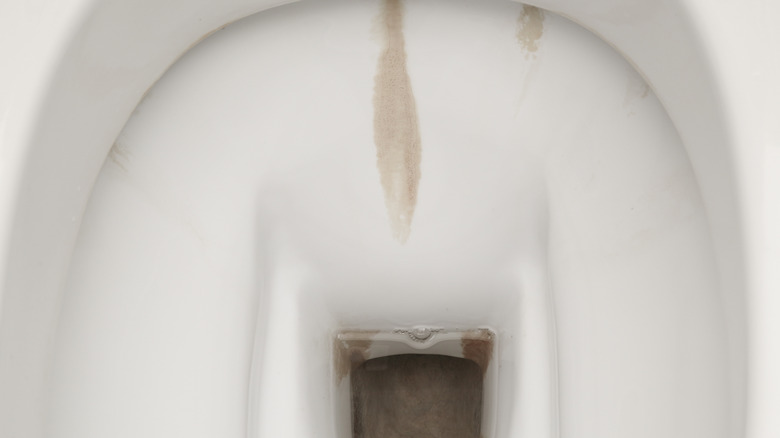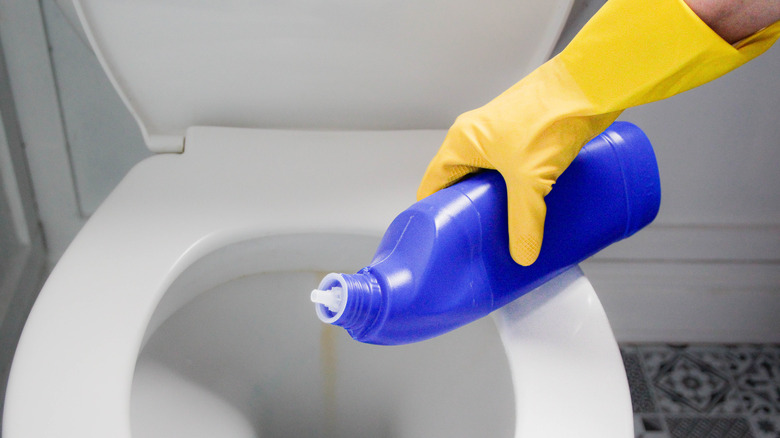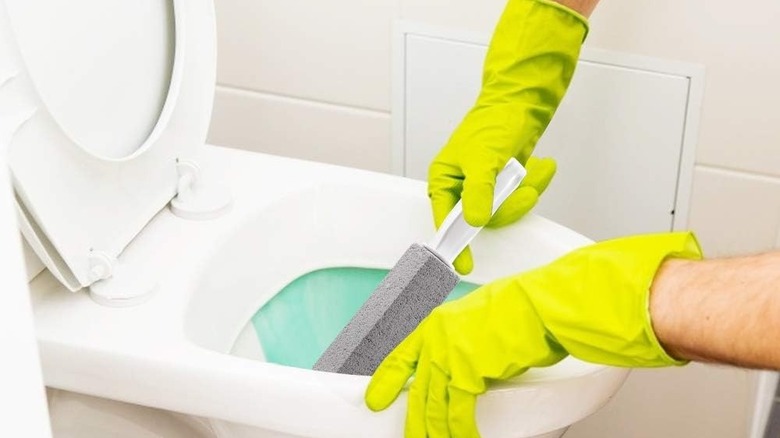8 Mystery Toilet Stains: Here's What Different Colors Mean & How To Clean Them
We may receive a commission on purchases made from links.
After you've left toilet cleaner to soak and you've given it your best with the help of a scrubbing brush, it can be disappointing to realize there are still stains and rings of residue at the bottom of the toilet bowl. Toilet stains come in almost all the colors of the rainbow, and there's no one-size-fits-all cause or solution. To help, we put together a guide to walk through some of the most common colors of toilet stains, what causes them, and what you need to get rid of them once and for all.
Understanding the significance of different toilet stain colors isn't just about maintaining a clean bathroom. The colors of toilet stains can serve as warning signs, revealing hidden problems like hard water, mold growth, or even plumbing issues that might require urgent attention. If ignored, they can harm your health, eat away at the finish of your toilet and lead to further damage, or cause a plumbing emergency. By recognizing what these stains mean and how to eliminate them, you can prevent any further damage or issues. This will save you time cleaning and uselessly scrubbing at the stains, as well as money from buying the wrong products, making costly repairs, or needing to call in professional services.
1. Red and orange stains in the toilet
Orange, red, and brown stains found in rings can often signify an iron buildup in the water, which is a common issue. You may notice these in toilets that haven't been flushed frequently, as the red iron residue stays behind after the water has evaporated. To eliminate rust stains, you'll want a highly acidic toilet cleaner, which can eat away at the alkaline chemical makeup of rust. We recommend using citric acid or Zep's Acidic Toilet Bowl Cleaner, which can be purchased on Amazon for $10. You can also try a cleaning vinegar.
2. Blue and green toilet stains
If you have a stain in your toilet that looks like the blue-green shade of toothpaste, you might be surprised to learn this is likely a result of copper. The copper coating on plumbing pipes can corrode, leaking into the water. Over time, copper oxidizes to a blue-green color, not dissimilar to the shade you see on copper statues. Make a DIY paste from equal parts flour, white vinegar, and salt and apply it to the stains using gloved hands. Let it sit for at least 30 minutes, then scrub it away with warm, soapy water and a toilet brush.
3. Chalky white-gray toilet stains
As with most of these stains, white, chalky toilet stains are due to something in the water. In this case, the cause is magnesium and calcium found in hard water, which could be the cause of your toilet's problems. What these leave behind is called limescale. Limescale isn't a health hazard, but the buildup is unsightly, and over time can cause clogs and blockages. As an alkaline mineral-based stain, acidic cleaning solutions are necessary yet again. Try using a limescale-specific toilet cleaner, such as Lime-A-Way or CLR, which can both be found on Amazon.
4. Black dots above the water line
Black dots or streaks above the water line are likely the result of mold. These nasty looking spores thrive in moist, dark environments, which makes your toilet bowl the perfect breeding ground. To treat them, you can use several cleaning staples, such as bleach and vinegar. While black marks right above the water line indicate mold, black streaks down the toilet bowl could possibly be manganese mineral deposits. It can be removed with an oxidizing solution like chlorine, but pure chlorine isn't considered safe to use in toilets, so we recommend opting for chlorine bleach. You can also try hydrogen peroxide.
5. Pink toilet stains
Often, people mistake pinkish red stains for iron, but a bacteria known as Serratia marcescens may be why there are pink ring stains in your toilet. One way to distinguish these stains from rust is by seeing if the stains are accompanied by a gray or pink film around the toilet bowl. This bacteria is commonly found in sink drains and showers as well. Luckily, cleaning it isn't too difficult and can typically be cleared away with some chlorine bleach. To prevent it from coming back again, dust the bathroom regularly, and consider using a multi-use toilet cleaning tablet.
6. Yellow toilet stains might be exactly what you think
Sometimes a yellow stain can indicate limescale deposits, the same as white chalky buildup, but often, it's exactly what you associate the color yellow with in toilets. This stain may be the result of urine scale. Essentially, the mineral components of the water interact with the bacteria of urine, and it leaves you with a thoroughly unsightly yellow and brown mineral residue. Just like limescale, you'll need an acidic cleaner to tackle the job. Try citric or hydrochloric acid, or a urine-specific cleaning product. The longer the scale sits, the harder it will be to remove, so give the products adequate time to work.
7. Gray toilet stains
Gray toilet stains can indicate two major issues: mold or mineral deposits. It's not always easy to tell which is which, either. Gray limescale will look like a chalky, almost powdery buildup, and is the result of minerals in the water. Gray stains can also be due to bacteria and may appear as a film. Treat gray limescale as you would any limescale, with the help of an acidic toilet cleaner. Kill off gray bacteria with mild bleach solution. If you aren't sure which you're dealing with, alternate between these cleaning methods.
8. General stain marks
Sometimes what seems like a stain might just be tons of gross buildup that can happen as a result of, well, the natural things that go on in a toilet — and too infrequent of cleaning. Try using an acidic toilet cleaner for mineral stains, followed by bleach for bacterial stains, if the acidic cleaner alone doesn't work. Scrub well and flush between products to prevent cross-contamination. Making sure the toilet is flushed, cleaned, and sanitized regularly can go a long way to ensure the stains won't return. You can also try using one of the top toilet bowl cleaner tablets between deep cleans.
9. If the stains won't go away, what should you use?
If none of these cleaning solutions have addressed the problem, which means the stains aren't breaking through on a chemical level, it may be time to try physical removal. Your toilet brush can help with this, but it isn't always abrasive enough to adequately displace the stain-causing buildup. Consider using a pumice stone instead, which is hard enough to break down hard deposits, but typically won't damage the surface of the toilet bowl. Be sure to wear gloves and always wash your hands after cleaning your toilet.
